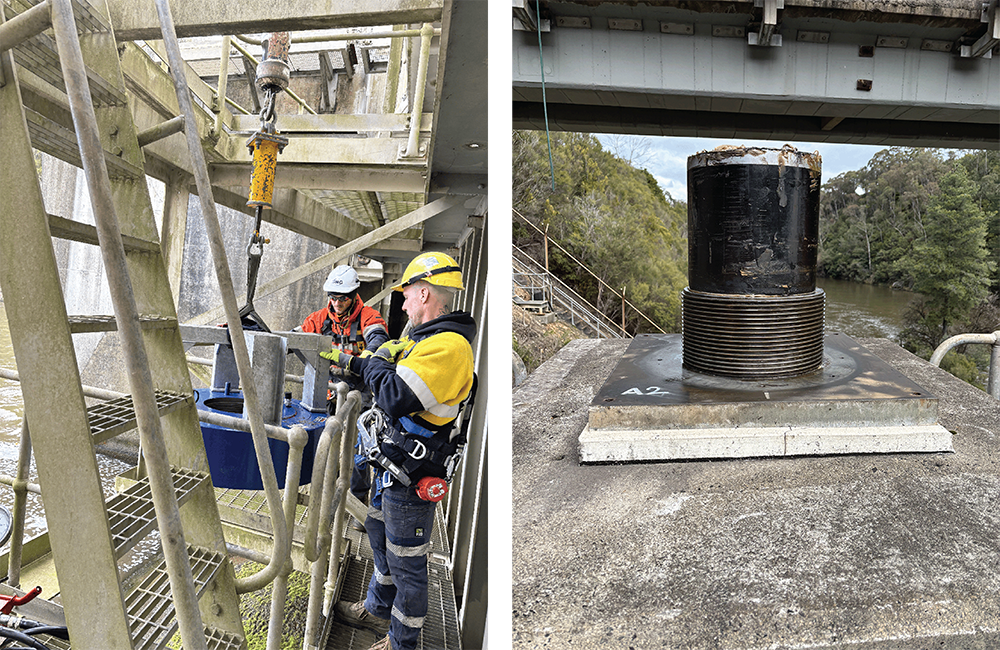We’ve been busy this winter completing anchor testings at Lake Narracan and Lake Glenmaggie to ensure the strength and stability of the dam structures meet the required standards. The results show they’re both rock solid and we wanted to share what’s involved in anchor testing and why it’s important.
What are anchors?
A dam anchor is typically a large bundle of high-strength steel strands that is installed by drilling a hole through the dam and inserting and grouting it into the bedrock to secure the structure. They act like massive bolts, helping to hold the dam wall down and improving its stability against hydraulic or seismic forces, such as earthquakes.
Dam anchors comprise three key components:
- Anchorage head: This is the connection between the anchor and the dam structure, enabling the transmission of the anchor forces to the dam via the bearing plate.
- Anchor free length: This is the section of strand from the anchorage head to the near end of the anchor’s fixed length.
- Anchor fixed length (also known as the Bond Length): This is the length of strand by which the tensile force is transmitted to the surrounding ground through the grout.
The steel strands are tensioned (stretched) after installation and then locked in place, effectively anchoring the dam to the foundation bedrock.
How do we test the anchors?
We use a load cell – a heavy and sturdy sensor – that measures the force or load applied to the anchor.
Load cells can be either hydraulic or electrical, and they help to provide real-time data on the anchor's performance, which is crucial for dam safety and maintenance. Before testing, the load cells undergo careful calibration and any necessary refurbishment to ensure accurate and reliable measurements during the anchor test.
The load cell is screwed onto the anchor, and using a hydraulic jack, we perform a test lift – raising the anchor 1.0 millimetre clear of the bearing plate.

Image on left: Load cell, Image on right: Anchor bolt
At this lift, the gauge should read between 70–72 percent of the anchor's designed Maximum Bearing Load (MBL). If the reading is below this range, it indicates the anchor is not providing sufficient resistance and requires re-tensioning. If the reading is above 72 percent, the anchor is over-tensioned and will also need adjustment to bring it within the design specifications.
Narracan dam wall has 20 multi-strand post-tensioned anchors, which were installed in the dam wall in 2002 as part of the major upgrade project, primarily focused on the dam wall. Lake Glenmaggie dam has 70 post-tensioned anchors, some of which were part of the original build, and some were installed in the spillway ogee in 1989. Recent anchor test results showed both dam structures are safe and secure.
How often do we test the anchors?
In line with our Operation and Maintenance Manual and the Australian National Committee on Large Dams guidelines, we must complete anchor testing at Lake Glenmaggie’s dam every five years and Narracan dam and Yallourn Weir every 10 years.
The work doesn’t stop though because our teams constantly monitor and manage our seven major dams and eight diversion weirs to keep risks as low as reasonably possible.
Daily visual inspections, drone surveys and geotechnical investigations are just some of the ways we keep a close eye on the condition and function of our dam structures to ensure they remain safe and fit-for-purpose.
If you want to learn more about dam safety, then meet our dam expert dedicated to safeguarding communities.

